Nebuchadnezzar Review
March 16, 2021 | 09:13
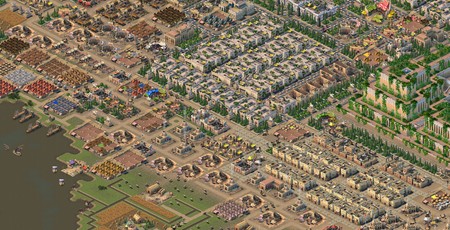
Price: £15.99
Developer: Nepos Games
Publisher: Nepos Games
Platform: PC
Like so many other genres left by the wayside in the mid-2000s, city-builders have enjoyed something of a resurgence in recent years. Cities: Skylines and Blue Byte’s Anno 1800 are two of the best city-builders around, while games like Factorio and Dyson-Sphere Program offer more industrially focussed versions of the city-building premise.
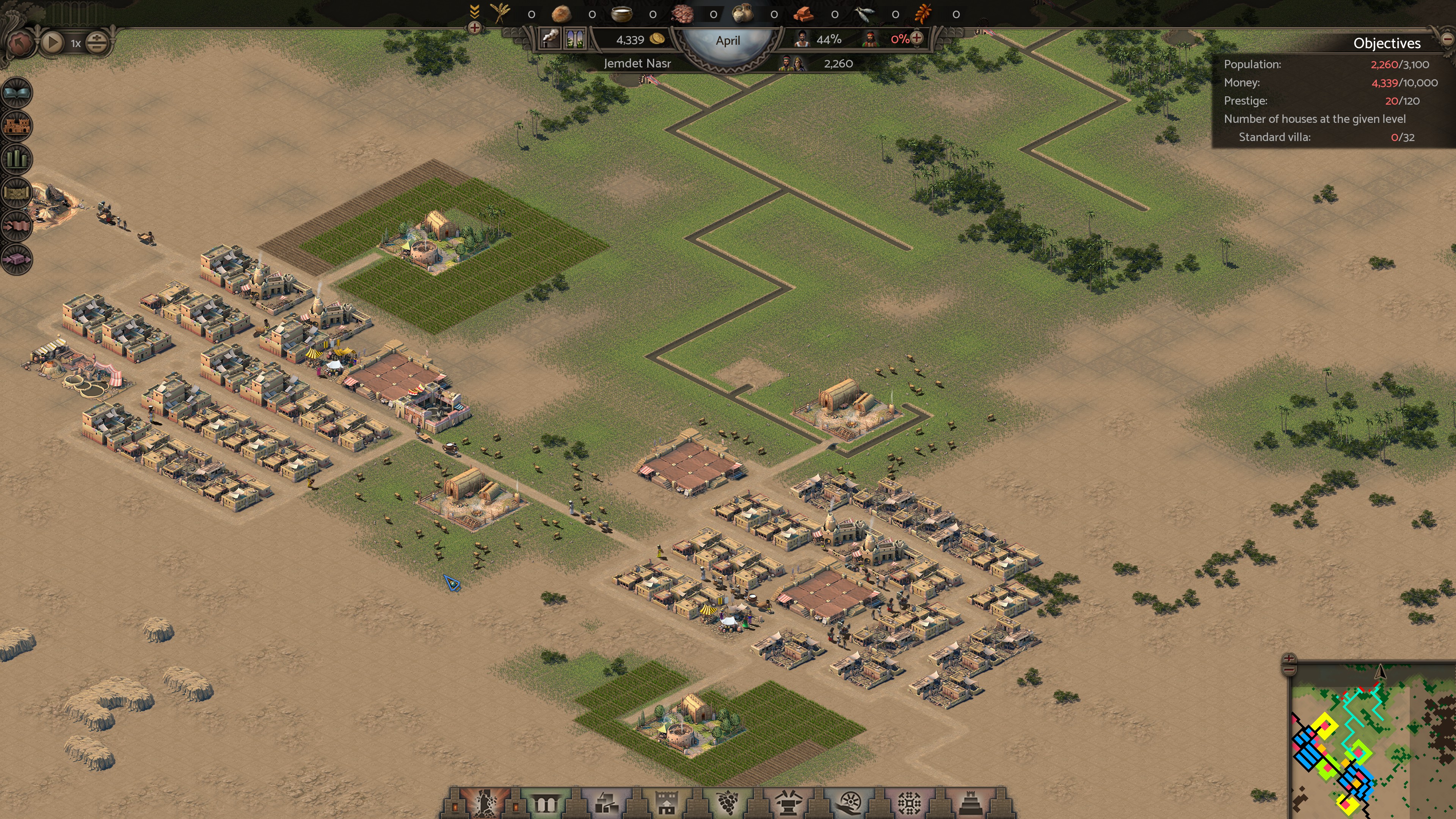
Yet while all the aforementioned games are great, none of them capture the spirit of the high-watermark of the genre, namely Caesar III and Pharaoh. Developed by Impressions Studios, these games are not merely about the pragmatics of city-building, they’re about the concept of civilisation itself, exploring pivotal moments in antiquity when humanity shifted away from living as scattered tribes into large, centralised, interconnected metropolises.
Nebuchadnezzar aims to evoke that style of city-builder, and in many ways it succeeds. But as a budget indie title, it inevitably falls short of those titans of the early 2000s, while some of its more old-school ideas fare less well in the year 2021.
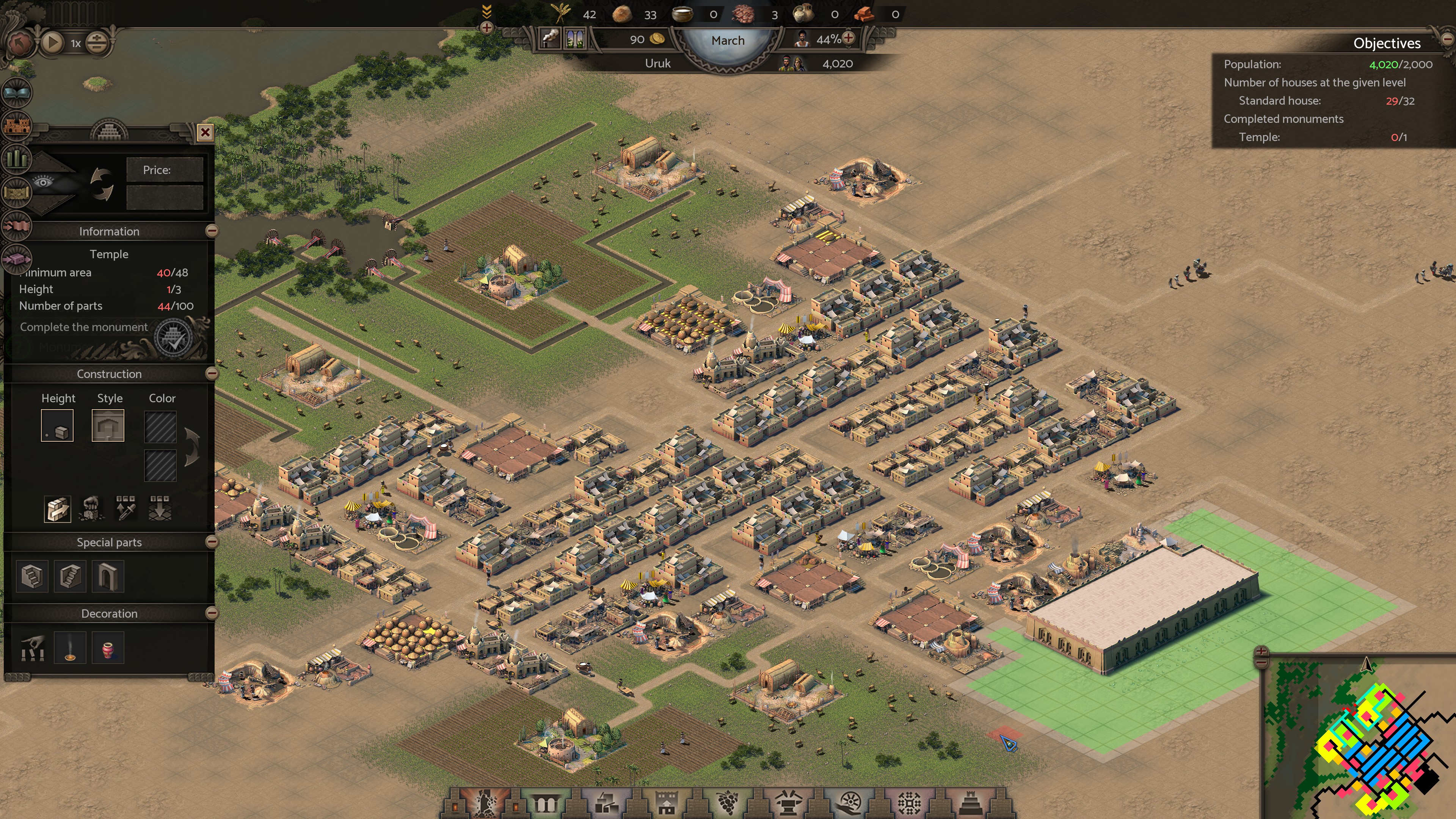
At least Nebuchadnezzar can rightfully claim itself the most ancient of ancient city-builders, catapulting players all the way back to the primordial bowl of civilisation, Mesopotamia. Through the twelve-mission campaign, your goal is to construct some of the world’s oldest and greatest cities, like Ur, Nineveh, and of course, Babylon. The first half of the campaign is dedicated to a series of tutorials, while the latter half gives you free reign to construct your cities how you like.
Initially, Nebuchadnezzar comes off as a little dry. This is partly due to the setting, as the unfathomably old architecture of Ancient Mesopotamia doesn’t have the same cultural omnipresence nor the innate showiness of later civilisations like Egypt and Rome. But it’s also partly due to the game’s aesthetic approach. Each mission is introduced with an informative but rather functional outline of the relevant historical period, after which you’re bunged straight into a static and grainy isometric landscape.
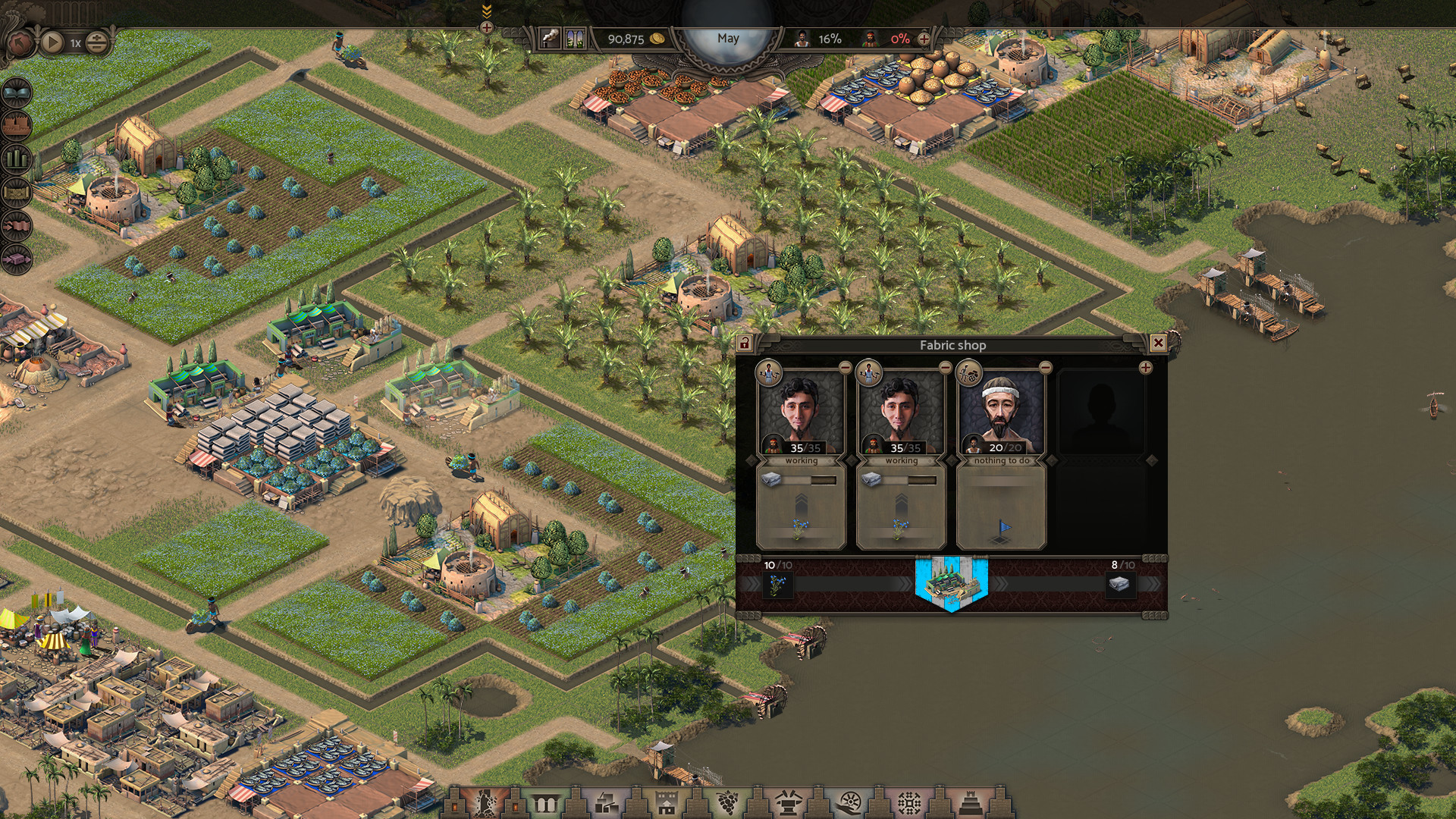
Once you begin building your city, however, Nebuchadnezzar starts to come alive. Each newly placed building is meticulously detailed, while also having a direct and (usually) visible effect on the behaviour of your city. Every new house will result in more settlers arriving via the dusty roads. Every farm placed will be tended by workers who sow fields with wheat, barley, dates and other crops which are then harvested when the time comes. One of my favourite details is how market stalls change the colour of their awnings based on the goods you set them to deal in.
I love how Nebuchadnezzar explicates its simulation like this, rather than abstracting it into obscure number crunching. The game boasts similar meticulousness in play. The challenge of Nebuchadnezzar is primarily one of logistics. Every production building you place requires workers to run it, but each residential building you construct will only house a small number of workers in its basic form. To upgrade houses, you need to supply them with specific goods, like bread, goat’s milk, ceramic pottery, and so on.
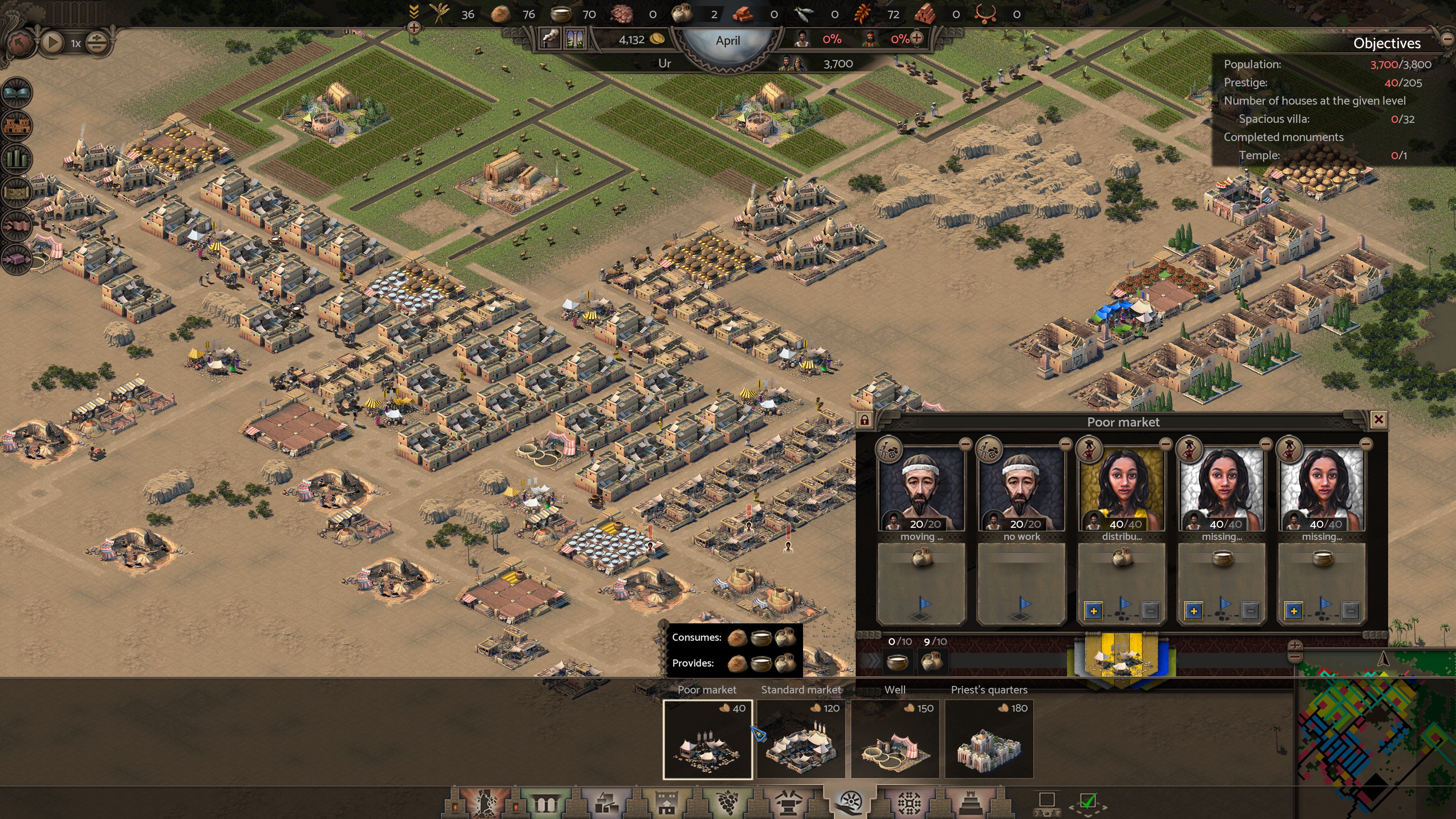
Doing this requires you to establish appropriate production lines for these goods (wheat- farms and bakeries in the case of bread) then ensure these goods are taken to market. This happens automatically if the market is nearby, while more distant markets can be serviced through building caravanserais and setting up trading routes. Once at the market, you must create additional delivery routes through town so that the market-vendors will carry their wares to nearby houses.
If this all sounds a bit laborious, then you’ve hit on the first of Nebuchadnezzar’s problems. I understand that classic city-builders were more challenging than modern equivalents, and as a big fan of Factorio and Dyson Sphere Program, I appreciate a logistics puzzle as much as anyone. But establishing individual routes for every market vendor is fiddly and boring. You have to do it for each item that every house needs, and if you change the layout of the buildings, there’s a good chance you’ll need to reset the route as well.
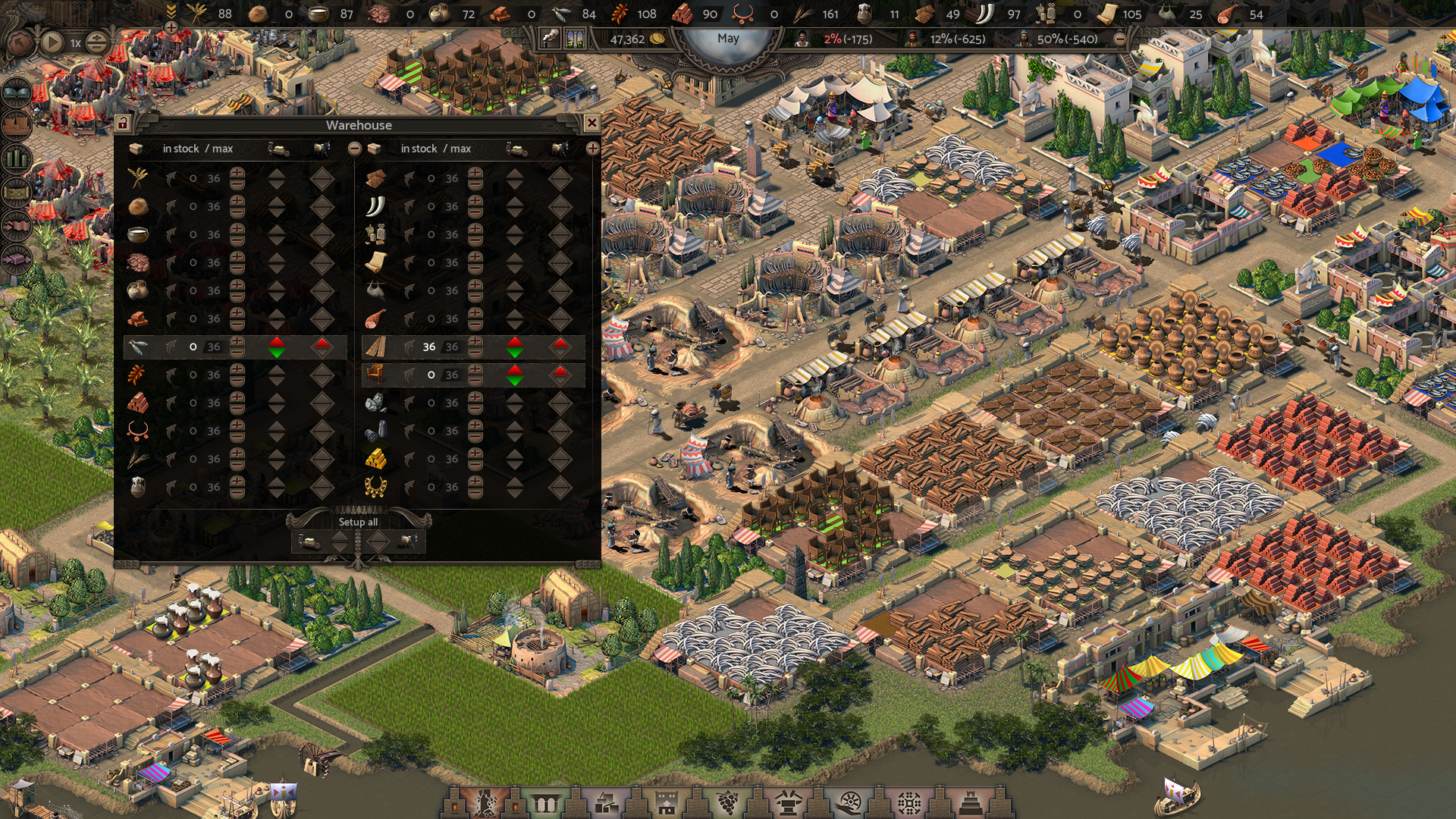
As well as being irksome, this mechanic doesn’t make much sense. Surely the point of a market is that buyers come to you, not the other way around. This isn’t the only way Nebuchadnezzar is structurally counter-intuitive either. Mission maps place a strict limit on building space. The intent is to encourage the puzzling out of more efficient layouts, but given the cities you build in Nebuchadnezzar were the first that ever existed, it seems unlikely there was a great shortage of building space.
Beyond these more functional problems, Nebuchadnezzar’s other major issue is that it focuses almost entirely on production chains, neglecting many other features that were a staple of classic city-builders. Examples like war, religion, and culture don’t feature in any meaningful way. Nebuchadnezzar does have a trading system, but this causes as many problems as it solves, as the starting requirements for trading with other cities are so demanding that you can feasibly run out of gold (required for construction) before you ever get to the point of trading.
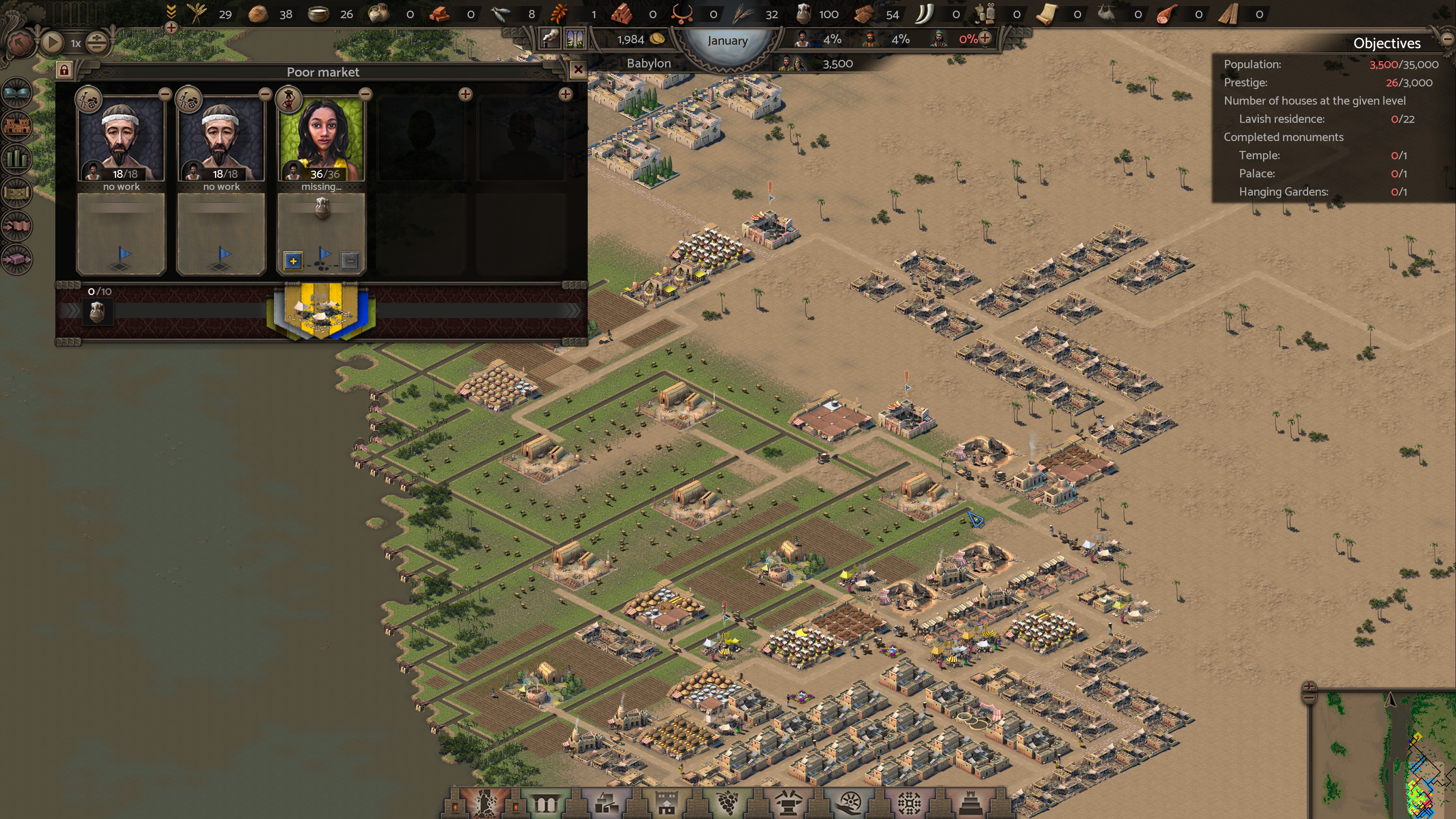
Nebuchadnezzar attempts to compensate for this lack of features with its custom monument designer. This lets you design and construct your own megalithic ego-massager, decorating it with braziers, trees, and so on. It’s extremely detailed, and a nice way to occupy your time when you’re waiting for other things in your city to resolve, but isn’t enough to make up for Nebuchadnezzar’s generally slight frame.
Nebuchadnezzar may have been better served launching an Early Access title rather than gunning straight for full release. Of course, this depends on whether the developers planned much in the way of post-release feature support. Either way, Nebuchadnezzar is a thoughtful and evocative throwback to the golden age of city-builders, but one that’s also overly anaemic and idiosyncratic. If you’ve exhausted the architectural pleasures of Anno 1800 and Cities: Skylines, you’ll likely find something to enjoy here. Otherwise, you should definitely investigate those games first, before travelling back to the third millennium BC.
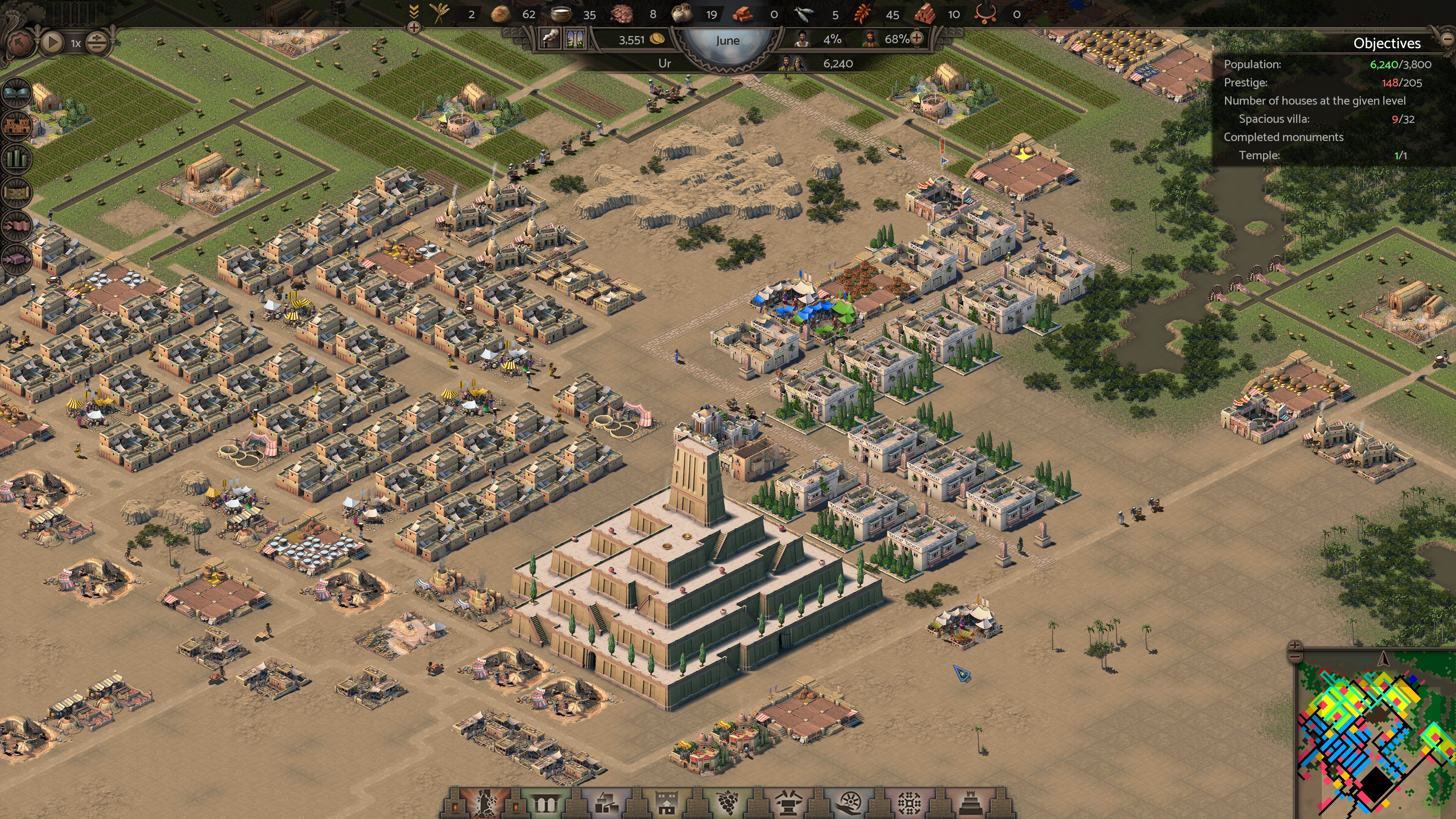

MSI MPG Velox 100R Chassis Review
October 14 2021 | 15:04






Want to comment? Please log in.